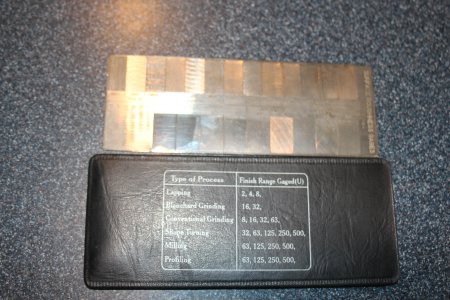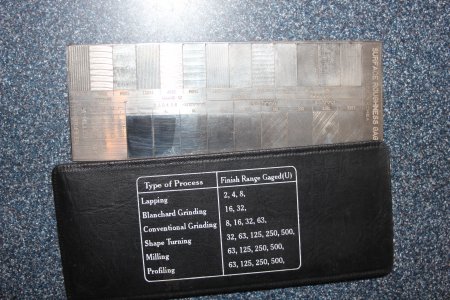-
Welcome back Guest! Did you know you can mentor other members here at H-M? If not, please check out our Relaunch of Hobby Machinist Mentoring Program!
You are using an out of date browser. It may not display this or other websites correctly.
You should upgrade or use an alternative browser.
You should upgrade or use an alternative browser.
How do you finish a shaft to a mirror finish to run through a bearing?
- Thread starter jbmauser
- Start date
- Joined
- Jun 7, 2013
- Messages
- 10,105
Fine tool finish, file, and emery cloth ID finish needs finish cut with a tool with a radius on the point or finish fit with an adjustable reamer.
- Joined
- Apr 28, 2014
- Messages
- 3,590
Have a look at Clickspring's videos on YouTube.
- Joined
- Jan 31, 2016
- Messages
- 11,474
You'll never get a mirror finish off a lathe . Cylindrical / centerless grinders will get you in the ballpark of possibly a 2-4 rms with polishing . Send a reamer or bore thru the brass followed by polishing or lapping .
This is dependent on what you really need though . Mirror , or smooth .
If it's standard size , go with Thompson rod .
This is dependent on what you really need though . Mirror , or smooth .
If it's standard size , go with Thompson rod .
20 RMS is about the best possible finish on a lathe with the proper tool nose radius, feeds, and speeds. Then you could polish to about a 10 RMS finish repeatedly using fine emery paper and then gray or red 3M (Scotchbrite) pads. I used to do this all day long when I worked at NAS Pensacola. My .02
- Joined
- Dec 12, 2016
- Messages
- 497
You can do pretty good with a toolpost grinder setup on a lathe. The spindle and grinder bearings need to be in good shape.
Otherwise, do as good as you can with a sharp HSS cutter, leave about .001 oversize and hand file it down from there, finish with emory. Do lots of checking with a good mic and you can get things within a couple of tenths.
Otherwise, do as good as you can with a sharp HSS cutter, leave about .001 oversize and hand file it down from there, finish with emory. Do lots of checking with a good mic and you can get things within a couple of tenths.
- Joined
- Feb 1, 2015
- Messages
- 9,623
I use successively finer grit wet or dry sand paper finishing with 2000 grit and then used .5 micron diamond paste for the final mirror finish. This works well on stainless steel.
For aluminum ,I take advantage of the rapid oxidation of aluminum, essentially forming aluminum oxide particles. I used to make parabolic mirrors for long distance optical sensors. I would cut the mirror on the lathe and begin the polishing process with 400 grit wet or dry and WD40 as a lubricant. When all tooling marks were removed, I switched to a drill mounted buffing pad charged with an self cleaning car wax. The aluminum particles wbeng removed contributed to the polishing process and as the polishing went on, the particles got smaller and smaller and the finish got finer. As a final step, I polished by hand using a random motion.
For aluminum ,I take advantage of the rapid oxidation of aluminum, essentially forming aluminum oxide particles. I used to make parabolic mirrors for long distance optical sensors. I would cut the mirror on the lathe and begin the polishing process with 400 grit wet or dry and WD40 as a lubricant. When all tooling marks were removed, I switched to a drill mounted buffing pad charged with an self cleaning car wax. The aluminum particles wbeng removed contributed to the polishing process and as the polishing went on, the particles got smaller and smaller and the finish got finer. As a final step, I polished by hand using a random motion.
- Joined
- Jan 31, 2016
- Messages
- 11,474
- Joined
- Sep 2, 2013
- Messages
- 5,108
As to your original ?. You don't really want a polished, slip fit finish, on a bearing shaft. The inner race should be a relatively firm fit so the bearing is doing it's job, and the inner race is not just turning on a polished shaft. As to turning a smooth finish, that is mostly about a function of tool grind, and setup. As outlined above, using various forms of grinding, sanding, and polishing, truly beautiful finishes can be achieved when required, and don't get me wrong, I loves me some shinny stuff. Mike
- Joined
- Apr 23, 2018
- Messages
- 6,559
Tool post grinders are great for finishing, but they don't work at all on brass. If you're working to a critical dimension, I think lapping with a shop-made arbor is the way to go.




